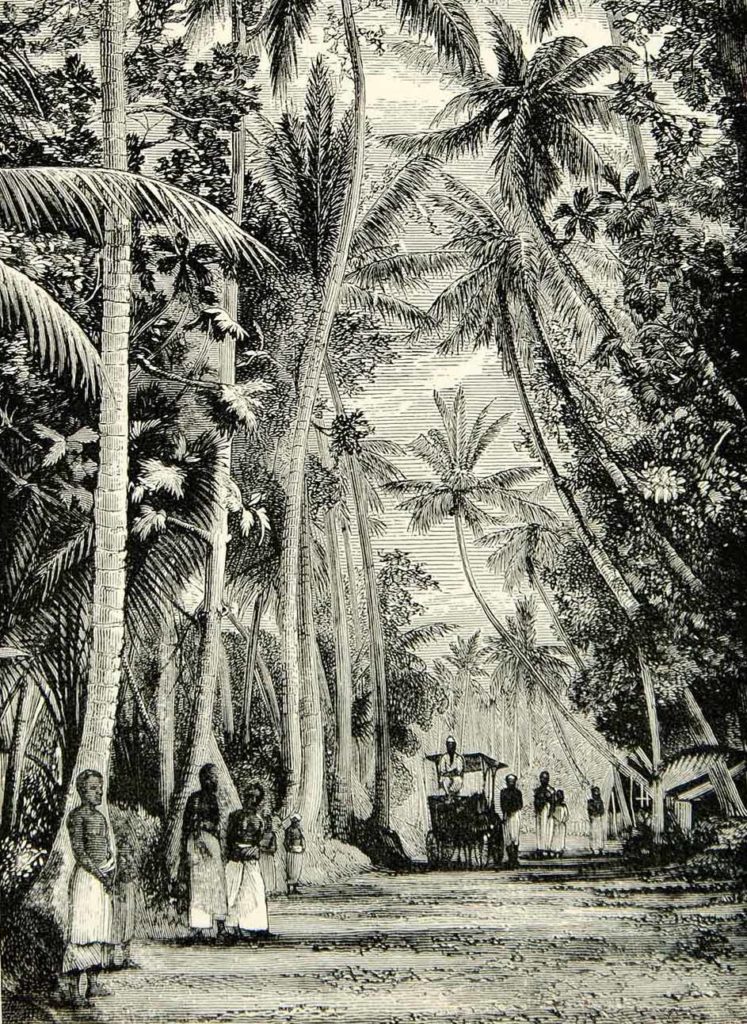By Henry Noltie & Mark Watson (continued from Part II)
Horticulturists and Civil Servants
The designation ‘professional’, which, during the twentieth century, increasingly came to be used in antithesis to ‘amateur’, was in a state of flux in the early nineteenth century. While Wallich occupies an interesting position in what is called the professionalisation of science (paid for his botanical work even if seen, at least by the EIC, more in its applied sense than that of ‘scientific’ research), most of his correspondents and donors of plants and seeds would in a modern sense be denoted ‘amateur’.
Two Horticulturists
The Calcutta Garden’s Plant Collectors, being paid for a single specialised activity, can certainly be considered ‘professional’, as can two individuals who, at this stage in their lives, can be called horticulturists. After the Collectors and medics, these contributed the largest number of specimens (255) to the Herbarium, of which by far the majority (252) were sent by George Isaac Porter (1800–1848) from Penang. The small contribution of Alexander Moon (d 1825), three specimens from Ceylon, would almost certainly have been much greater but for his premature death.
George Porter emerges as a fascinating character, who, at the request of Wallich in August 1819, was transferred from the Bengal Artillery at Dum Dum to be ‘Overseer’ of the Botanic Garden, though how their paths crossed is unknown. As Porter’s life shows, Wallich clearly had an eye for potential as the gunner was only 18 at the time. Esther Little Bryden also had an eye for potential as she had married Porter in June, the newlyweds acquiring an instant family in the form of four apprentice boys from the Free School who came to live with them at the Garden (see Henry Bruce and William Gomez in Part I) – they would later have seven children of their own. Porter travelled with his employer on Wallich’s sick leave to Singapore in 1822, but was left in Georgetown, the capital of what was then Prince of Wales Island (later Penang), to establish a botanic garden, which he ran for two years.
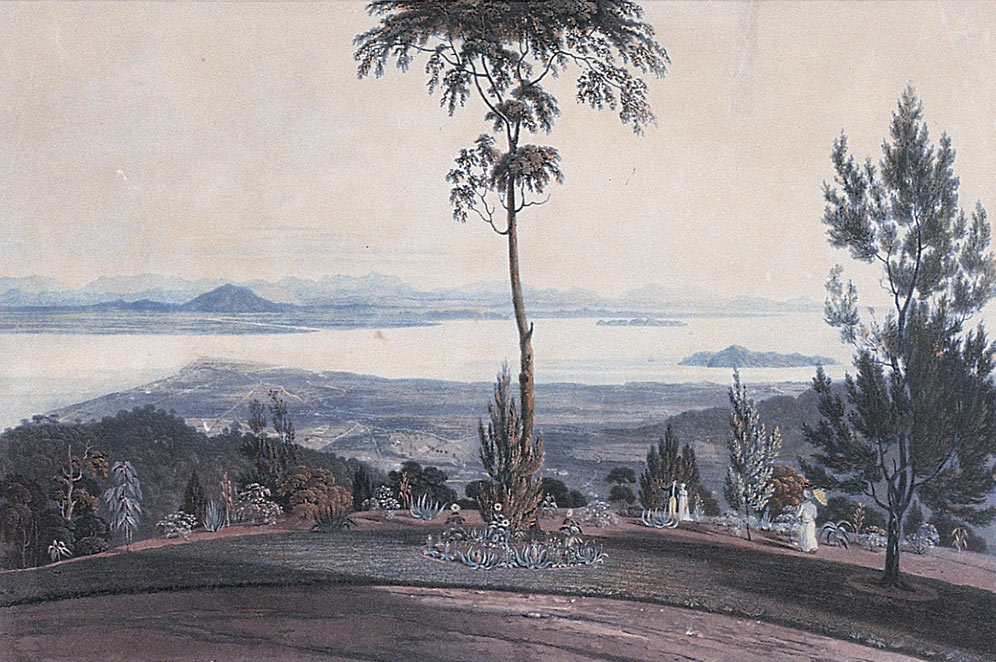
It must have been during this period that Porter sent the specimens to Calcutta, as in 1824 he became Schoolmaster of the Free School and Parish Clerk of St George’s Church. His family had joined him and his enterprising spirit clearly predominated as Porter gave up the teaching post after two years and entered into a business that prospered. Information that has recently become available on the Internet shows that Porter went on to greater things. In 1835, with his wife and six surviving children, he emigrated to Australia, where he established a business in Sydney. In 1839 he moved to Melbourne where (to his considerable financial advantage) he took an active part in the development of the town, including its cultural (the Mechanics Institution and the beginnings of the Botanic Garden), medical, and ecclesiastical institutions before his relatively early death in 1848.
Ceylon did not form part of the EIC territories and from 1798, following its seizure from the Dutch, was administered as a Crown Colony. The island had always been important in terms of its botanical resources, especially cinnamon, and the British established a botanic garden at Colombo. On the recommendation of Sir Joseph Banks, Alexander Moon was appointed as the garden’s superintendent in succession to William Kerr, who had died in 1814 after only two years in post. Little is known of Moon, who arrived in Ceylon in 1817 having previously worked as a gardener at Kew. He is known to have been Scottish and of three boys of that name for whom records survive, all born in Perthshire at around the right time, the one born at Blair Atholl in 1791 is perhaps the most likely.
In 1822 Moon moved the existing botanic garden from the lowlands at Kalutara to Peradeniya in the central highlands near Kandy, where it remains to this day. From the remarkable Catalogue of his new garden, beautifully printed in Colombo in 1824, which includes local plant names in Singhalese script and many new species (though mostly not formally described), Moon’s abilities were clearly outstanding. He employed Harmanis de Alwis Seneviratne as an artist (a post he held for 38 years), who fathered a dynasty of distinguished botanical artists. Moon succumbed to fever in 1825, though three of the plants he sent to Wallich for cultivation at Calcutta were made into herbarium specimens, for two of which Moon’s manuscript names were used in the Catalogue: Convolvulus zeylanica (now Ipomoea corymbosa) and Premna procumbens.
The Civil Servants
Of EIC officials who sent material to Wallich that was preserved in the Herbarium the largest group after the medics was the civil servants. Between them eight of these ‘amateur’ botanists account for some 196 specimens, and these greatly expand the geographical range covered by the doctors.
The Nilgiri Hills
In the Herbarium are large numbers of specimens from South India, but largely in the ‘incorporated’ herbaria that are not discussed here. The great exception comes from the biodiverse section of the Western Ghats known as the Nilgiri Hills (then spelt in a variety of phonetic variants). By far the most important collection, 148 specimens, was sent to Wallich by Benjamin Noton (1784–1869), Assay Master of the Bombay Mint, who was appointed to the EIC in 1812 and retired in 1838.

The means of his citation, both in the Herbarium and the Catalogue, has led to his being quartered into four different people, bearing the initials ‘P.J.’, ‘E.’ and ‘W.’ in addition to the correct ‘B.’ This started with Wallich’s misreading as ‘P.J.’ of a slightly squint and unspooled capital B, written in Noton’s hand, and published as such when Wallich named the beautiful deep-blue ‘gesner’ Wulfenia notoniana (now Rhynchoglossum notonianum) for him in 1826. The error was later propagated on many tickets in the Herbarium, written in a variety of hands. The ‘E’ seems to have arisen as a translocation/conflation from the source of the plant ‘E Nilghiry’ (meaning ‘from the Nilgiris’) to the collector as ‘Dom[inus] E. Noton’; and, although Benjamin did have a military brother William in India, the ‘W’ is probably a corruption of ‘Mr’ Noton written on some specimen labels.
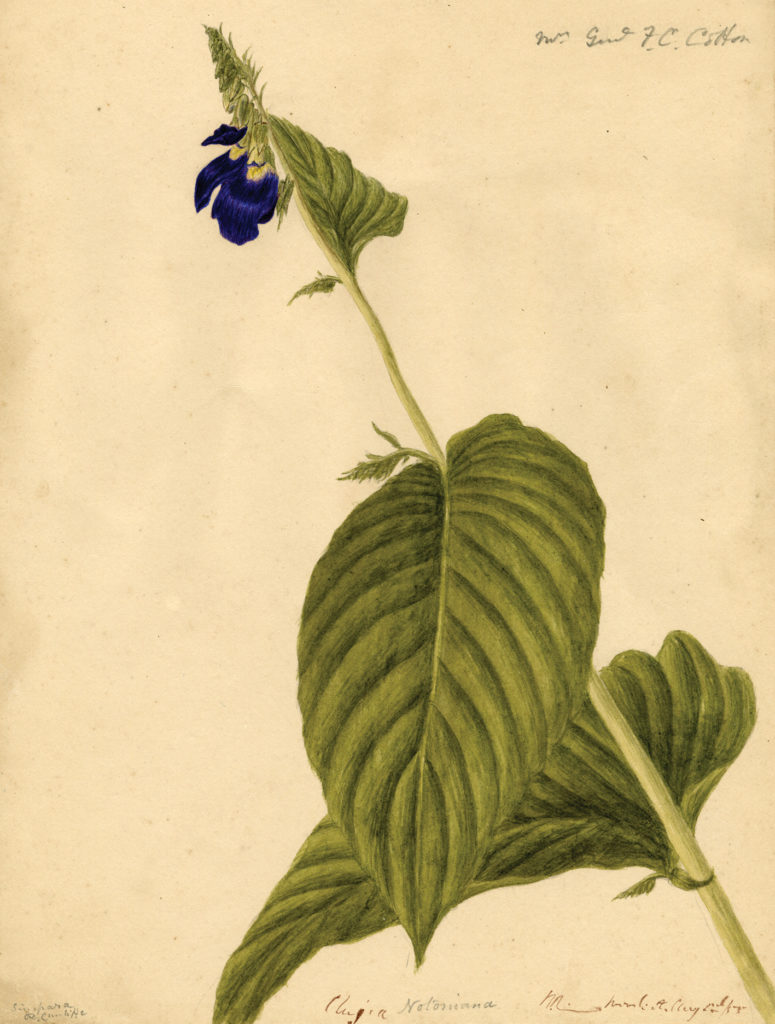
The reunified Benjamin emerges as a significant contributor not only to the Herbarium, but to the early discovery of the Nilgiri flora. The collections (except for a few from the Deccan much closer to Bombay, probably what is now Karli) are all from the Nilgiris, mostly from Dimhutty, and were collected between December 1824 and June 1826. This might, perhaps, suggest that Noton was then on sick-leave in the Nilgiris and occupying his time with an intellectually stimulating diversion.
The post of Assay Master of the Indian mints, of which Bombay is the oldest (founded 1672), was usually given to someone with scientific ability (most famously James Prinsep in Calcutta). This is reflected in Noton’s labels some of which are unusual in the Herbarium in the habitat and habit details included (he even noted heterostyly in Hedyotis stylosa, Wall. Cat. 853.1). This makes it all the more surprising that after this restricted period Noton appears entirely to have given up botany. He is, however, known from the literature as a recorder of tidal data from Bombay Harbour and, in collaboration with his lawyer brother George (1789–1862), for a long-running series of meteorological records. Benjamin retired, a bachelor, to Chichester where he lived with two maiden sisters, but died at St Leonards-on-Sea.
Two other individuals each contributed a single specimen from the Nilgiris. Frederick Fenby Clementson (1798–1881), at the time the Magistrate and Assistant Collector of Coimbatore, the major town at the southern foot of the Nilgiris, but who had a house in Ooty, sent a handsome pink Lysimachia. Wallich intended to name it for him, but it had an earlier name and is now known as L. leschenaultii.
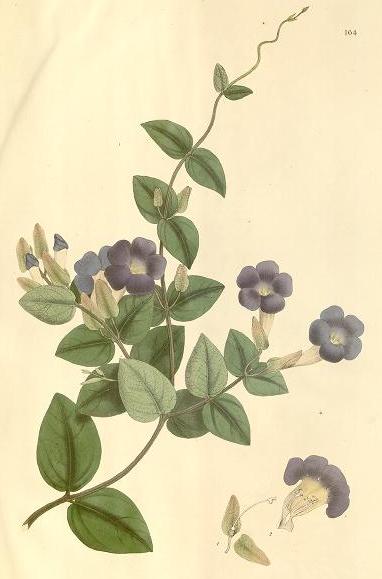
The final Nilgiri contributor is the only cleric represented in the Herbarium, the Rev John Hawtayne (c 1791–1833), whom Wallich met in Calcutta where his first appointment was as private chaplain to the first Bishop of Calcutta. The diocese was established in 1813, when the EIC was forced to commence an ecclesiastical establishment, and Thomas Middleton was appointed to cover the whole of the East India Company’s territories including Ceylon, SE Asia, parts of Australia and southern Africa. In Calcutta in 1826 the young cleric not only found a wife (Margaret, daughter of the Judge Sir John Franks), but achieved preferment to become the second Archdeacon of Bombay, the Venerable Dr John Hawtayne. Though only a single contribution the plant, as with Clementson’s, is an extremely handsome one, an ‘acanth’, which survives with Wallich’s name as Thunbergia hawtayneana.
The Khasia and Jaintia Hills (‘Silhet’)
As already noted in Part I, three of the Garden’s Plant Collectors, William Gomez, Henry Bruce and Francis De Silva were active in the Sylhet area, primarily the Khasia and Jaintia Hills, the botanical riches of which had first been made known by Matthew Richard Smith (1749–1819). Smith began to communicate with the Calcutta Garden in Roxburgh’s time, to which he is credited with the introduction of almost 200 plants between 1810 and 1813 (he also sent Roxburgh a basket lined with caoutchouc, a natural rubber derived from Ficus elastica), and investigated coal resources and silk worms. In December 1810 Roxburgh wrote that ‘numerous donations have for these last twelve months been made to this Garden by Mr Mathew Smith an old man, and an old inhabitant of Silhet, whose long residence (above forty years) in that place, and intimate acquaintance with the Hill people in its vicinity, has enabled him to procure from their Country, more new undescribed plants, than I have ever been able to get from any one individual within the same space of time.’
Smith lived at Pundua, 16 miles north of Sylhet, probably the place in Bangladesh now known as Companiganj, where he had been ‘Superintendent of Embankments’. Roxburgh obtained a Government grant of 100 Rs per month for Smith to enable him to pay local plant collectors; he also supervised a teak plantation for which he received another 100 Rs. He was regarded as an ‘Assistant’ to the Superintendent of the Calcutta Botanic Garden and Henry T. Colebrooke, on ending his period acting in that capacity in 1814, had Smith’s Assistant’s allowance doubled. During Wallich’s superintendentship Smith continued to supply material to the Garden and twenty specimens in the Herbarium are credited to him. The assertion of Isaac Henry Burkill, in his usually reliable Chapters in the History of Indian Botany, that Smith was a ‘magistrate’ is incorrect.
[The above section on M.R. Smith was updated on 9 August 2024]
Canton
Perhaps the most important of all items of trade for the EIC at this period was tea, which, even with the shameful use of Indian opium in exchange, was still a major source of expenditure by the Company that it wished to reduce, one means of which would be to grow the plant in India, or to find a local substitute. The Chinese strictly controlled access to their country by foreigners and restricted them to certain ports; the export of tea by the EIC was through Canton.
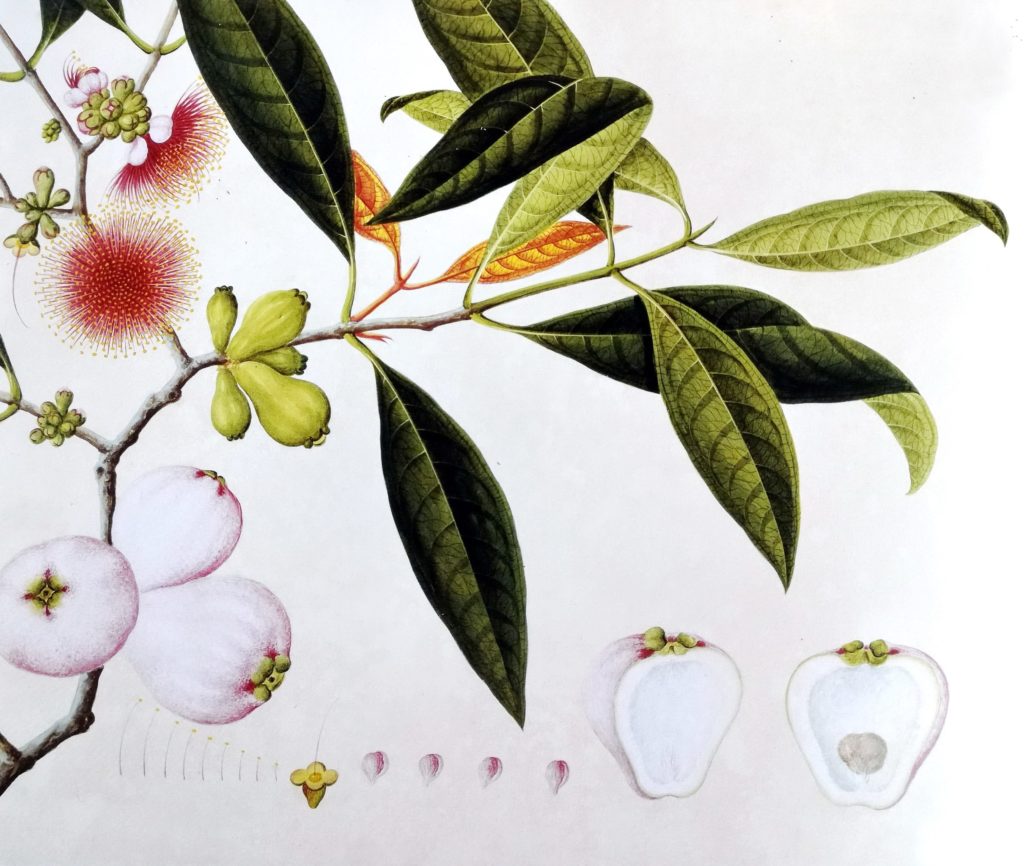
In 1812 John Reeves (1774–1856) was appointed Assistant (later becoming Chief) Inspector of Tea for the Company and was based there, where he became interested in both plants and animals and sent many specimens back to both Calcutta and to Europe, many of the plants originating from the Fa-tee nurseries. Of specimens sent to Wallich for cultivation in the Calcutta Garden 16 were made into herbarium specimens that bear Reeves’s name as donor. Two of these Wallich intended to name for him: ‘Callicarpa Reevesii’ (now C. nudiflora) and ‘Eupatorium Reevesii’ (now E. chinense).
Singapore
As noted in Part II Raffles, in 1818, travelled from Bencoolen to Calcutta to persuade Lord Hastings to establish a free port at the mouth of the Straits of Malacca. The following year Raffles sailed with his entourage from Calcutta, depositing his pregnant wife Sophia at Penang in the care of Dr Jack. Raffles continued southwards to negotiate for what was to become Singapore, leaving William Farquhar (of whom more anon, in Part IV) there as its first Resident.
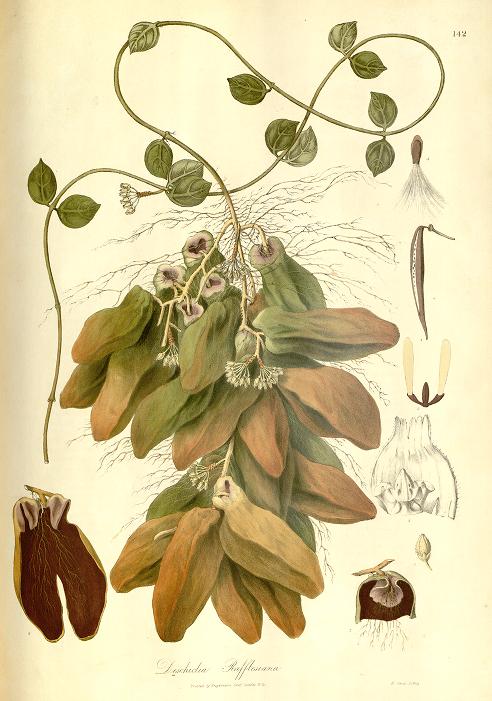
More than thirty years earlier John Prince (c 1772–1848) had been appointed as a Company ‘writer’ and posted to Fort Marlborough at Bencoolen. Prince spent most of the rest of his career in Sumatra, taking over as Resident on Raffle’s departure from Bencoolen. When this outpost was dissolved Prince was transferred to Singapore, where he held the post of Resident Councillor for fifteen months from August 1826. In Bencoolen Prince had continued to employ Raffles’s Chinese artist A. Kow whom he appears to have taken with him to Singapore, from where Prince sent Wallich both paintings and specimens. Eight of the latter are in the Herbarium, one of which Wallich intended to name ‘Erycibe Princei’ (now E. tomentosa).
Manipur
It was probably the aftermath of the Burmese war that took David Scott (1786–1831) to Manipur, one of the north-eastern states ceded to the EIC. Although Scott contributed only a single specimen to the Herbarium, it is an interesting one and allows his name to be added to the list of distinguished botanists who, like Robert Brown, William Paterson and George Don, were born in the county of Angus. His father was Archibald Scott of Usan; his uncle was the influential EIC Director David Scott of Dunninald.
Scott’s Indian diplomatic postings were entirely in the north-east, from where he started to correspond with and send plants to Wallich from Cooch Behar in 1819. Shortly to become the Governor-General’s Agent and Commissioner of Assam, he is remembered today mainly for his founding of Cherrapunji as a sanatorium in what is allegedly the wettest place on earth, and where a monument to his memory survives.
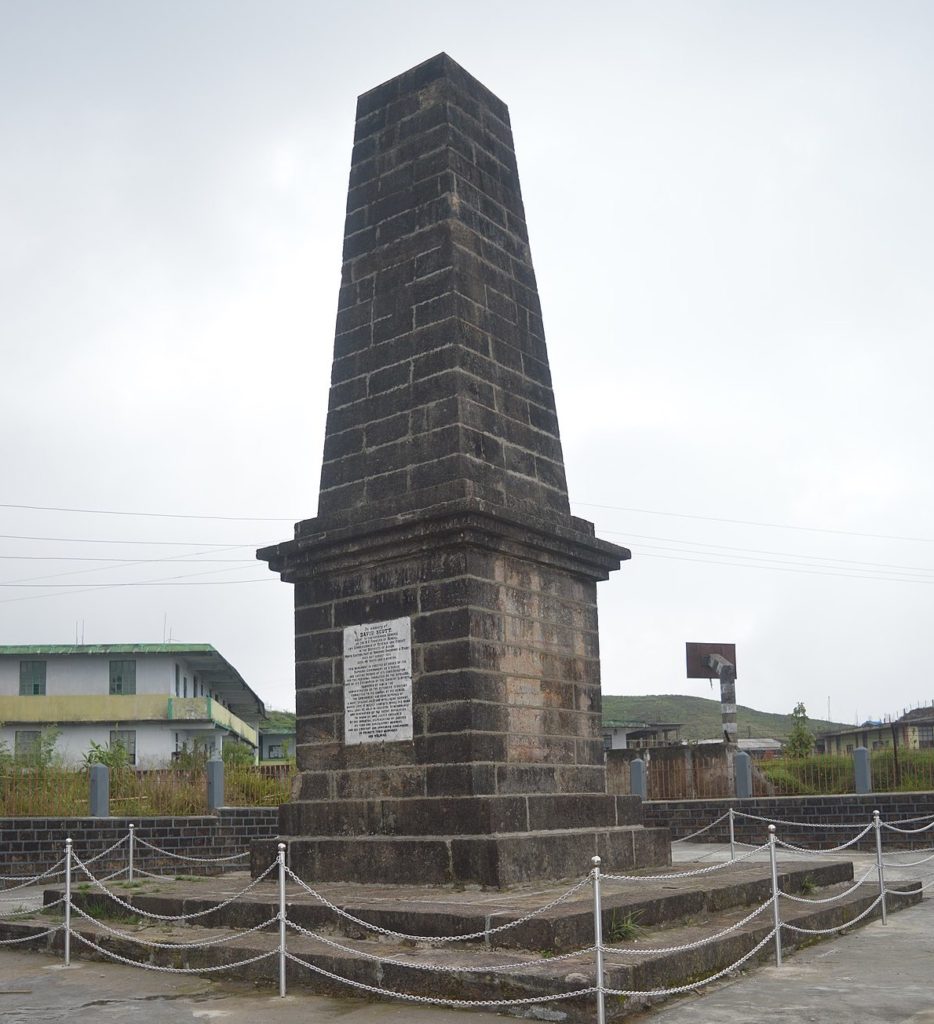
Scott is also one of the players in the story of the discovery of wild tea in north-east India in the 1820s and ’30s – a topic then of potentially huge commercial interest if it would allow the breaking of the Chinese tea monopoly. Scott and others were aware that what was probably a wild species of tea grew in the Naga Hills and had sent living plants of it to Calcutta in 1826, but which died. In the same year, in Manipur, he found a plant that was known definitively to be a wild tea and sent some of its leaves, with a covering letter, to James Kyd of Calcutta (Kyd was a shipbuilder and twice-removed cousin of Colonel Robert Kyd, founder of the Calcutta Garden). It was these two leaves (and the letter), of what Wallich intended to call ‘Camellia scottiana’ that found their way into Herbarium. Now, along with the Naga plants, known as Camellia sinensis var. assamica, it would come to form a major part of the success story of tea in India.
Nepal
Nepal seems to have held a special fascination for Wallich, possibly in part for its ‘Shangri La’ mystique (snowy mountains; the difficulty to obtain permission to enter it), but also for its botanical riches. These had first been revealed by Francis Buchanan on his visit of 1802–3, and even if only a portion of his remarkable finds had been published (a few species cherry-picked by J.E. Smith, and in condensed form in David Don’s Prodromus of 1825), Wallich would have known of them at first-hand from Buchanan himself.
As already noted in Part I, the Hon Edward Gardner (1784–1861), a Bengal civil servant, had been the Resident in Kathmandu since 1816, where he employed plant collectors whose specimens (living and herbarium) were sent to Wallich in Calcutta. Eventually, through Gardner’s considerable diplomatic skills, the Nepal Court allowed Wallich’s Plant Collectors Blinkworth, Bharat Singh and Francis De Silva to work in the country, and then Wallich himself to visit in 1821/2.
Wallich’s own collections, of which there are many from Nepal in the Herbarium, are not discussed here, and the earlier ones of Gardner, his deputy Robert Stuart, and the Plant Collectors (with very few exceptions) do not form part of the Herbarium. These had been sent back to Britain long before 1828, notably to A.B. Lambert and J.E. Smith, under Wallich’s name, and many of them were published in Don’s Prodromus of 1825. One of the first names ever published by Wallich was Daphne (now Edgeworthia) gardneri, in gratitude for Gardner’s prolific dispatches of plants to the Calcutta Garden.
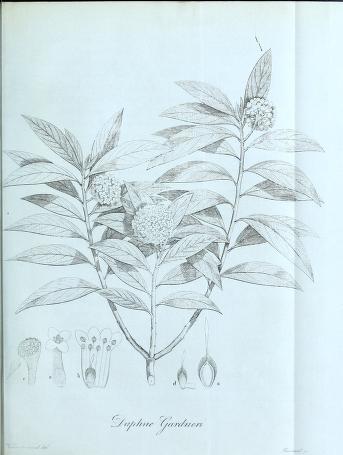
In his own unique style, the Nepalese collections of Gardner are discussed by Chris Fraser-Jenkins in his equally characteristically titled 2006 book: The first botanical collectors in Nepal, the fern collections of Hamilton, Gardner and Wallich: lost herbaria, a lost botanist, lost letters and lost books somewhat rediscovered. The result is that there is only a single specimen in the Herbarium attributed to Gardner (now called Rubus glandulifer), though his name occurs in connection with seven specimens collected by Wallich in 1821 in the Kathmandu Residency garden at Ranikabag (now Lainchaur).

